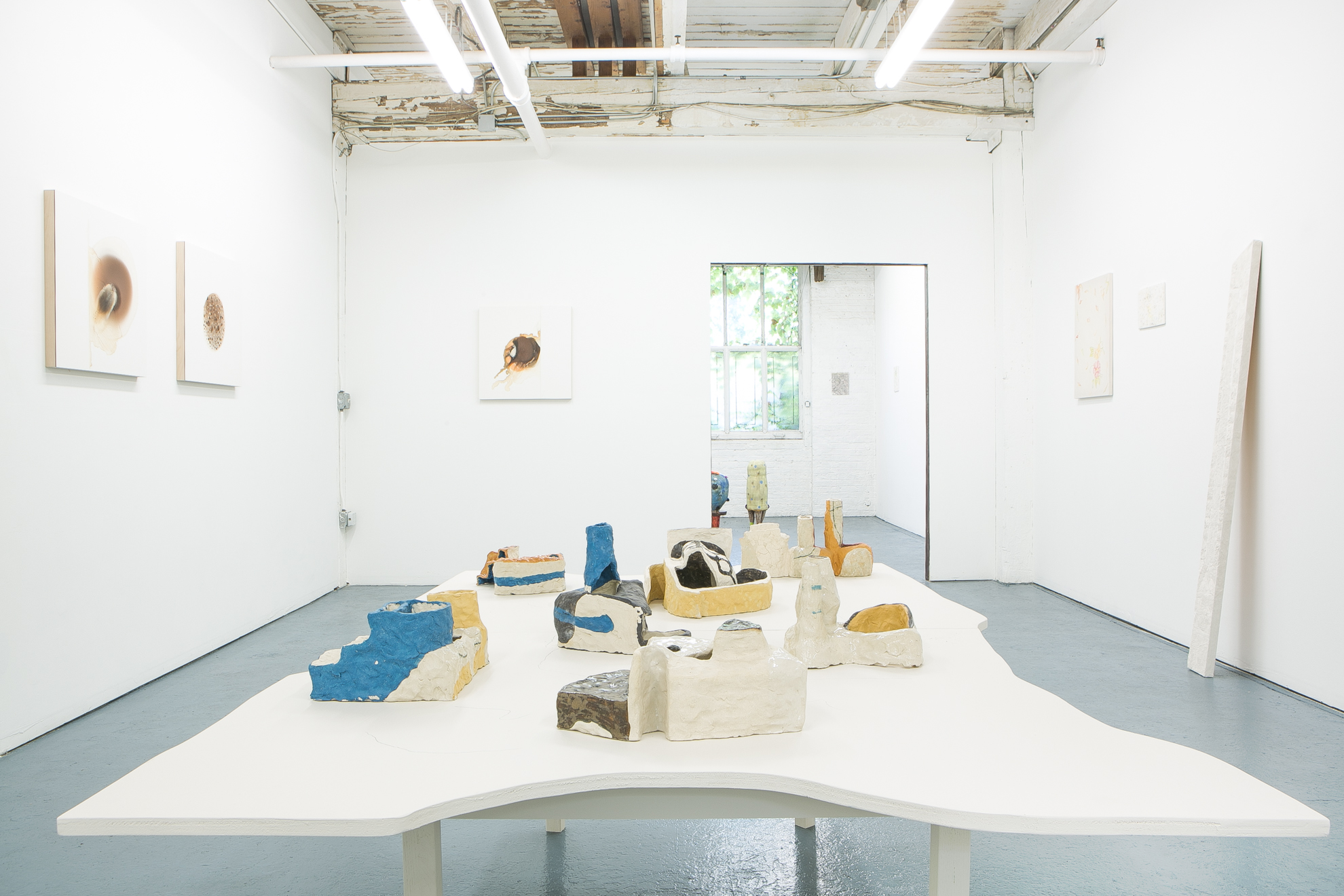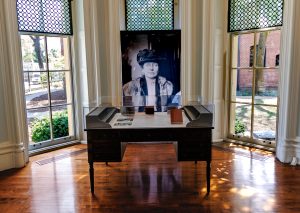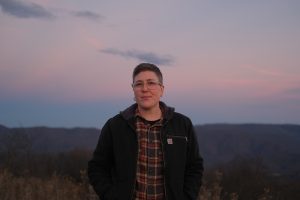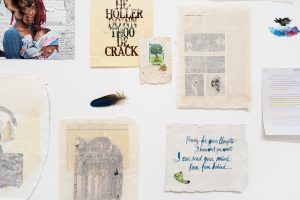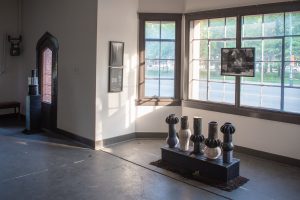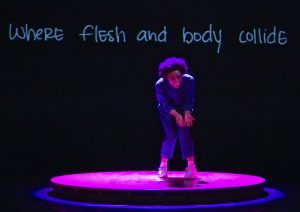“To persist at an encounter with the poor little world is the work of the artist. A test, and I think we do it for each other. To enact a critical metaphysics out of love, to ask and play and choke and fail, to posit small actions as consequential, emphatic, necessary, to insist on painting as an archive of touch, is hopeful, is hungry. My community exceeds me, the gift somehow never leaves my hands.” – Dana DeGiulio
The creative act for the artist lends gravity to small actions, as motions and brush strokes become big decisions. In the group exhibition “An Archive of Touch,” each artist reconsidered their decisions through the lens of the titular concept, creating as a process of archiving touch. The output: documents of acrylics, carved clays, oils, stoneware, yarn; histories of relationships with objects, others, and themselves. Residing in East Garfield Park at Goldfinch Gallery through August 3, “An Archive of Touch” is comprised of works by Yesenia Bello, Dana DeGiulio, Andreas Fischer, Alejandro Jiménez-Flores, Joyce Lung, SaraNoa Mark, and Kellie Romany.
At the opening on June 30, Goldfinch owner and director Claudine Isé elaborated on the origins of the exhibition, a line from an artist statement written by Brooklyn painter Dana DeGiulio. In the back of the gallery DeGiulio’s subtle oil panels (each one representing a day) are mounted like early exposures of the final exhibition, or days crossed off a weekly planner leading to its debut. Isé explains DeGiulio’s comparison of painting to “an archive of touch,” the exhibition as projections of that idea refracted through different visions upon various mediums. Isé and Goldfinch Assistant Director Elizabeth Lalley cemented this context but curated the room for interpretation — for the artists and for the viewers.

Later, I’ll go home and re-visit Marcel Duchamp’s essay “The Creative Act.” Duchamp explains the creative act, part of the artist’s “struggle toward the realization,” as “a series of efforts, pains, satisfaction, refusals, decisions.” Similar to DeGiulio’s language of struggle (“to persist,” “test,” “fail”). Regardless of the artist’s process or final work, it does not mean anything to anyone besides the creator without social value. Duchamp focuses more on the larger scale, institutional value of art “in the primers of Artist History,” but his statement reflects DeGiulio’s: the community exceeds the individual creative act.

“An Archive of Touch,” appropriately, is less an immediate, sensual impression than a relational one, relative to the triangulation of intention, creation, and reaction while working in different time zones. SaraNoa Mark’s clay carvings are a fictitious cuneiform, paying homage to nature’s passage of time on the landscape as well as human discovery of the artifacts that help us understand our histories; meanwhile, Alejandro Jiménez-Flores’ “gifted and collected petals” look to a future, “a language that is not here yet,” as they articulate.

At the front and center of the space Yesenia Bello’s stoneware sculptures, Other Forms of Sensemaking, rest on a table like a guestless tea party. When I hover over them, however, I start reading them like tea leaves, seeing human shapes — noses, ribs, mouths (or other orifices) — and human impulses. The forms are caught in the act, a struggle to stand as silos and risk collapse or give in to the compression of another’s hands, surrendering control; also necessitating a process of standing ground/letting go for the artist, the sculptures chart an “impermanent map of relationships,” as Bello describes them.

Living in the back of the space are Joyce Lung’s ceramic selections, The Obscurity series. Lung has framed her “archive of touch” as a family history. Her pieces resemble furniture with plumage, or simply a few dysfunctions: Piano Chair looks soft enough, pink even, but its spiked legs make me suspect (I did quit piano lessons when I was younger).

I ask artist Kellie Romany how her oil works act as “an archive of touch.” She speaks to the flesh-tone pigments and their traces on the board then beyond to “how others shift us.” To progress and regress, to stagnate, in the scope of personal journals and history books. In Romany’s work Safe Space, a circle contains and/or reveals brown textured spots that could be a diversity of specimens under a microscope or hundreds of planets in a galaxy. It depends on whether the safe space exists in proximity or with distance.

For Andreas Fischer, “Intimacy is the goal … unless that is too weird,” he has stated. His brush strokes create a brief, acrylic history, but he is mainly seeking a connection with the viewer. I am touched by his piece Sitting with the small ghost of someone I had just known, and it sounds as it appears: a little like a dream, a little like a poem I wrote for someone and never told them about. They are colorful Rorschach figures that remind me of more skilled, visual manifestations of my old journals, which are shut in a box under my bed. The journals are all written in a language that means something only to me, until I open them and begin the struggle of translating them for a reader.
The writing process can feel like chipping away for months at a sculpture that vanishes upon completion. It is often a slow suffocation, a reaction to the environment, asthmatic. Chip, a word, delete. Chip, more words, more questions. Yet it is a survival tactic, a process to try to connect and understand, or fight back. It can burst out laughing and kiss gently. It is work, it is living, it is a gift.
I also think we do it for each other.
Featured Image: A view of An Archive of Touch exhibition at Goldfinch Gallery from the entrance of the space. Photo by Daniel Hojnacki.


Amanda Dee is a Chicago-based multi-media creator with seven years of storytelling experience across art, journalism, nonprofit, and health organizations. She is also the associate producer of the oral history podcast Moral Courage Radio: Ferguson Voices, which documents voices from the Ferguson community in the wake of the 2014 police shooting of Michael Brown. You can find more of her work here.
